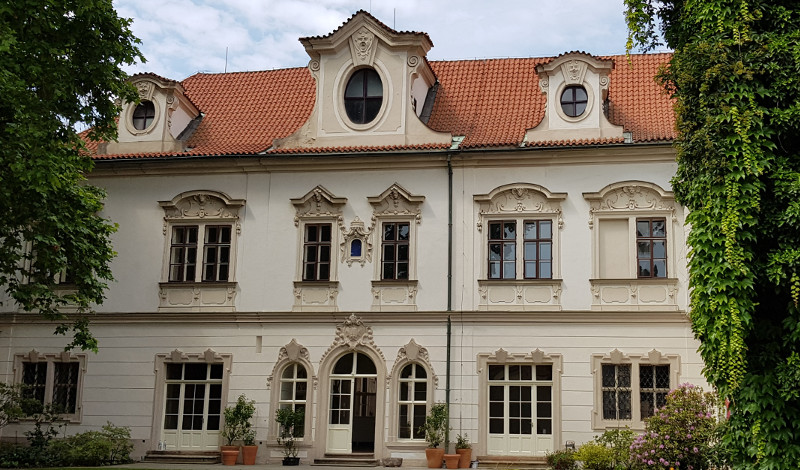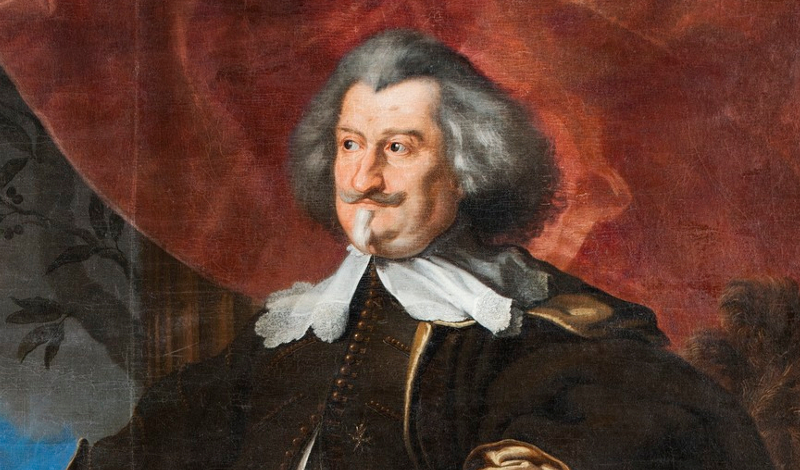History of the Grand Priory of Bohemia

The Order of Malta in the Czech Lands
The Johanniter Order was invited to Bohemia by Prince Vladislav II, who had taken part in the Second Crusade with the forces of King Conrad II of Germany, during which he had learned of the Order’s activities. At some time during the years 1156-1159 the Johannites acquired land to the south of the bishop’s court by the Judith Bridge, later destroyed, in Prague. The Church of Our Lady beneath the Chain became the Order’s headquarters, its name referring to the chain that was used to shut the commandry’s gate or to block the river to detain boats and rafts, simplifying the collection of tolls.
Over time, more commandries were founded, with the most important ones being in Strakonice, Horažďovice, Manětín and Český Dub. In 1301 the prior at Our Lady beneath the Chain was granted the right of pontificalia by Pope Boniface VIII. In 1378, the body of Charles IV was exposed in the Order’s church in Prague for one day and one night. In 1393 the neutral ground of the Johanniter Order witnessed distasteful scenes: Wenceslas IV had been attacking the Archbishop of Prague, Jan of Jenštejn, and the ultimate victim of the king’s rage was the Archbishop’s vicar-general, John of Nepomuk.
In 1402 the Order became the owner of Strakonice Castle in its entirety, which then became the Order’s refuge and headquarters after the Hussites had driven it out of Prague. The priors-general in Strakonice were fervent defenders of the Catholic faith and prominent members of the Strakonice Union and the Grünberger Union, who were opposed to the reign of George of Poděbrady. In 1512 Pope Julius II granted the Strakonice priors the right of pontificalia, although only until such time as the convent in Prague would be restored. Bohemian knights, albeit only a symbolic number of them, fought in the heroic defence of Malta (1565) and the Battle of Lepanto (1571).
On the eve of the Thirty Years’ War the Spanish Carmelite monk Domenico a Jesu Maria found a painting of the Virgin Mary and the Infant Jesus that had been desecrated by Protestant troops, and this painting then spurred soldiers on in the momentous Battle of White Mountain. As the victory was attributed to the aid of the Virgin Mary, the painting became an object of veneration as an image of Our Lady of Victory. In 1629 the highest superior of the Order in Bohemia was given the title Grand Prior. Amongst the Grand Priors, Rudolf Colloredo-Wallsee won renown in 1648 for his heroic defence of Prague against Swedish forces.
In 1694, the convent and the Grand Prior moved back from Strakonice to Prague, where on 22 February 1718 there occurred one of the miracles (the rescue of Rosalie Hodánková from under the ice) necessary for the canonisation of John of Nepomuk. In 1726-1727 the residence of the Grand Priors in Prague was built, followed in 1728-1731 by a convent on the other side of the Church of Our Lady beneath the Chain. In 1784, the administration of the Church of Our Lady Victorious, with the world-famous statue of the Infant Jesus of Prague, was entrusted to the Order. The Grand Priory of Bohemia (including the convent) was the only one to withstand the general collapse of the Order’s structures in the chaos of Napoleonic expansion and the secularisation of Europe. Grand Prior Othenio Lichnowsky-Werdenberg made the Order famous for the eight hospital trains he commissioned to treat soldiers wounded in battle during World War I. These trains travelled 1 062 760 kilometres in total, transporting 359 945 injured soldiers from the battlefield. The Order’s medics performed 27 163 operations during the War, over half of them in the Order’s field hospitals. The Grand Priory of Bohemia also financed the construction and operation of a hospice in Tantura in the Holy Land.
On 2 April 1881, Emperor Franz Joseph I made the Grand Prior of Bohemia and Austria (and his successors) an Austrian prince. After the fall of the monarchy, the Order’s property was eroded by land reforms, the economic crisis and the political climate in the country. In 1938, for political reasons the Grand Priory was split into two parts: the Grand Priory of Bohemia and the Grand Priory of Austria. Two prominent figures helped the Order in the difficult years of World War II: Karel Cardinal Kašpar, Archbishop of Prague and Primate of the Czech Church, and Prince Karel VI of Schwarzenberg. The latter ensured the survival of the Grand Priory in exile after the communists suppressed the Order’s activities in 1950. The Grand Priory was restored in Prague on 20 April 1990, on the eve of a visit to the city by Pope John Paul II.
PhDr. Milan Buben, Ph.D.,
Knight of Magistral Grace

